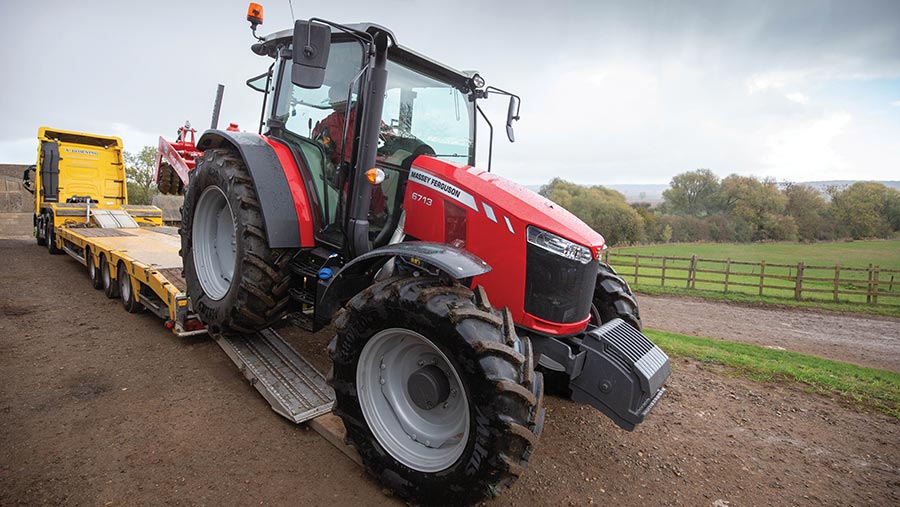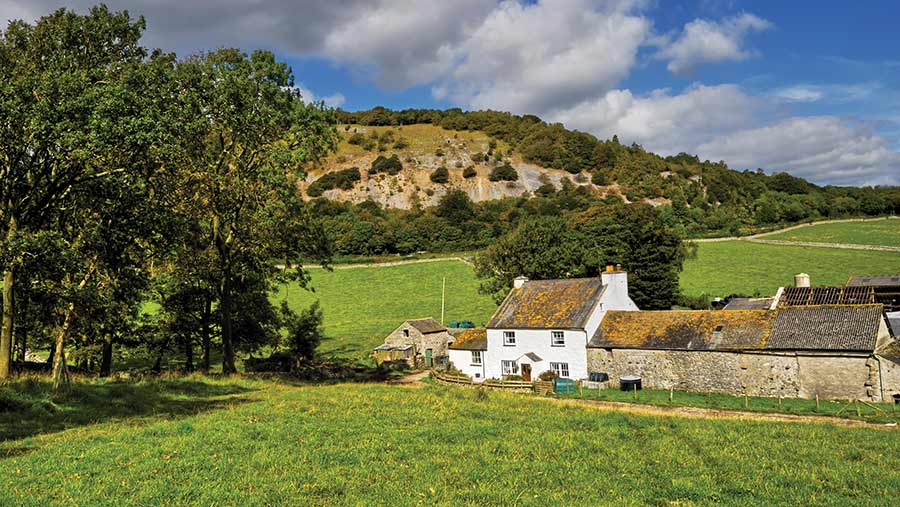Common farm VAT mistakes and how to avoid them
 © Tim Scrivener
© Tim Scrivener From confusion over which goods and services are VAT-exempt and zero-rated, to wrongly reclaiming the tax on feed and vet fees for a child’s pet pony, often it is the same errors that trip up farmers.
Accountant Andrew Robinson says inspections are less common since HMRC adopted a more targeted and risk-based approach.
However, they do happen and this is when historic mistakes are picked up and result in a business being issued with an assessment for VAT underpaid or wrongly claimed.
“If there is an inspection, almost every time one of the first things the inspector will look at is if the business has claimed VAT on items that are for personal use or those that have a joint business and personal use.
“For example a vehicle that might be used to take livestock to market but also for ferrying the children to school,” he says.
See also: Loss of BPS value could cut capital gains tax bill on other assets
Andrew, of Armstrong Watson, and agricultural secretary and administrator Lynn Briggs advise how VAT-registered farming businesses can avoid this pitfall and others.
1. Claim VAT at the correct rate
VAT is charged at different rates according to the goods or services involved, but farmers often enter these against the wrong codes on accounting software.
There are five VAT categories: 5%, 20%, zero-rated, exempt and outside of scope.
Get it wrong and HMRC will demand repayment of any tax that has been over-claimed, but the consequences can be more severe.
“If you are found to have deliberately overclaimed, you will be hauled over the coals and fined,’’ warns Lynn, chair of the Institute of Agricultural Secretaries and Administrators (IAgSA).
“But errors are mostly genuine and the inspector will be able to see that.”
More often than not farmers will discover they have underclaimed, not overclaimed, in which case the money can be claimed back on the next VAT return.
Mix-ups often occur over the zero and exempt rates.
Most food items that farmers produce – milk, livestock, eggs and crops – are zero-rated for VAT, which means that it is not charged on them, but the farmer is still entitled to reclaim VAT on the cost of producing those goods.
This is different from services or goods which are VAT-exempt, such as insurance and bank loans, says Lynn.
“If there is a residential property on the farm that is rented out to a private individual, this rent is VAT-exempt, which means that the money is collected but no VAT is charged on it, because residential rents are exempt from VAT,” she explains.
There is also “outside of scope” to consider – this refers to items such as staff wages or employment tax payments which are outside the scope of VAT, as are Basic Payment Scheme payments.
Farmers frequently enter these as zero rated or exempt, she adds.
“BPS is out of scope and should be taken out of the VAT return completely,” she advises.
2. Don’t forget the ‘de minimis limit’
A business can claim small amounts of VAT on costs related to exempt supplies, if those amounts are within the “de-minimis limit”, advises Andrew.
To be reclaimed in full, the VAT on building improvements, for example re-roofing commercial or residential rental properties, must be less than £7,500 a year.
It is also necessary that the input VAT being reclaimed on standard rated farm costs is greater than the input VAT on the exempt buildings costs, he says.
For larger projects, consider spreading the cost over two or more VAT years to take full advantage of the limit.
3. ‘Out of the ordinary’ VAT returns can trigger an inspection
When a farmer buys a piece of expensive machinery, it can put a quarterly tax return out of kilter with the other three quarters.
For example, when £200,000 has been spent on a new combine the return would include a VAT claim for £40,000.
“A quirky return will draw HMRC’s attention, and it is likely to ask you to send it your six biggest invoices for that quarter,” says Lynn.
Don’t forget to account for the sale VAT on the part exchange, she adds. “Don’t just put the net difference as the amount to claim.”
4. Hire purchase (HP) agreements
It can be tricky to get the VAT right on an HP agreement because the finance company will send money to the farm business so that it can pay for the purchase; a monthly payment is made to the company from there on.
The purchase should be entered into the farm accounts as a machinery purchase, Lynn advises.
“A machinery purchase is a standard-rated purchase, so 20% VAT can be claimed back at this point.”
However, all HP repayments are outside of scope, she adds.
5. Farm v private expenses

Items such as electricity and oil can be used within the farm business but also in the farmhouse, so the VAT claim must reflect this.
Andrew suggests that a common metric is a 60/40 split, with 60% apportioned to the business, adding: “If you claim for a higher percentage you must have good evidence for doing so.”
Accountants often have their own computation for this split.
“HMRC will generally accept 50-75%, but if it is at the upper end of that there must be a clear argument to support this,” says Andrew.
For vehicles that have dual farm and private use, apply HMRC’s fuel scale charge.
Feed and vet bills for non-farm animals often come under HMRC scrutiny, says Andrew.
“A child’s pony, for example, is nothing to do with the farm business, therefore there is no reason for VAT to be claimed for any of its costs.”
6. Reverse charge
UK farm businesses sometimes receive services from overseas companies, for instance web hosting or computer software.
More often than not, invoices received from overseas businesses will not include a charge to UK VAT.
Lynn explains that this is mostly correct and UK VAT on the value of the supplies should instead be accounted for by the UK business recipient, under what is known as the reverse charge procedure.
“Many businesses make the mistake of thinking that because no VAT was charged on the supply, this should be treated as a zero-rated purchase,” she says.
However, the output tax that would be due, had the item been received from a UK supplier, should be declared by the recipient on the same VAT return as the corresponding input tax is claimed.
This accounting procedure will have no net impact on the VAT return for most businesses, but for those that are partially exempt, correctly recording receipt of reverse charge services can result in an input tax restriction.
7. VAT on part-exchanges
The rules around VAT on part-exchanges are not straightforward, but Andrew advises that if a farmer is part-exchanging a piece of machinery as part of a purchase, they must declare output VAT on the outgoing piece of kit as well as input VAT on the new piece of kit.
